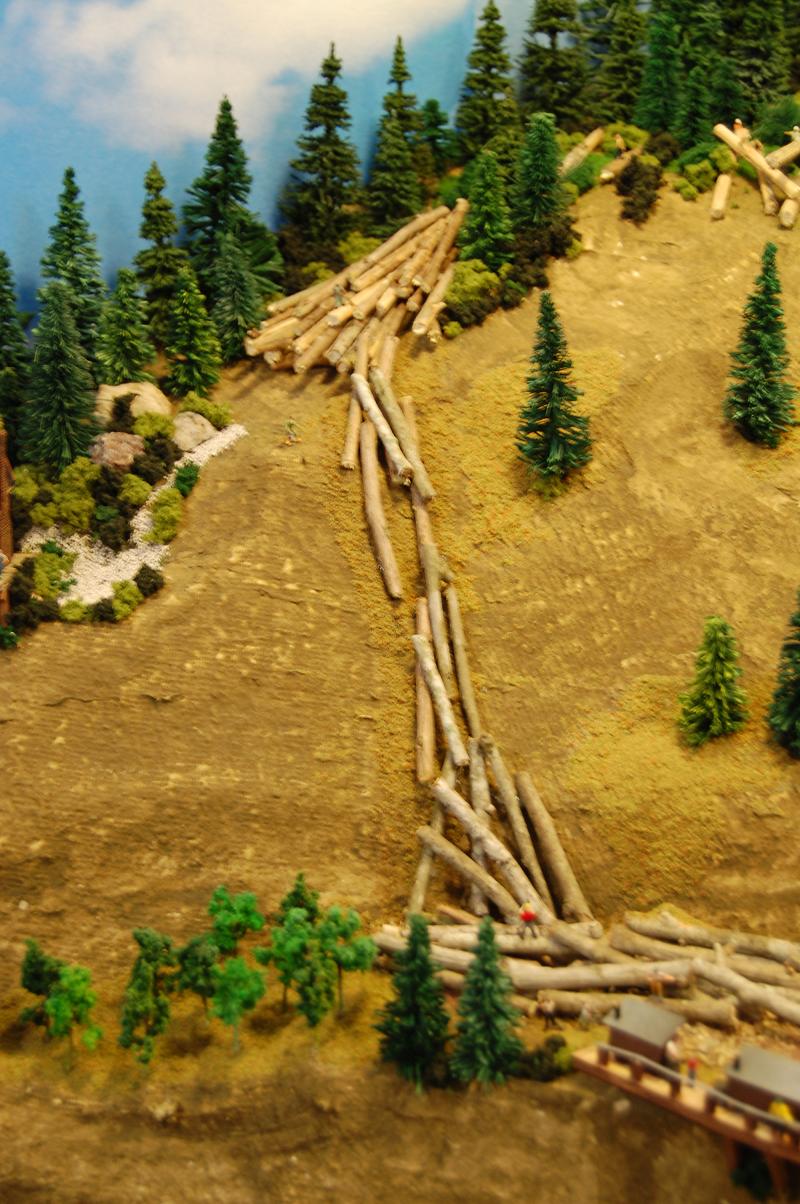
In 1850, the Williamsport region of Pennsylvania was the logging capital of the United States. Logging farms often required a branch railroad with a switchback track pattern to bring the logs to market. Typically a small engine pulling a single car was required to bring logs down to a staging track.
Here is the Yeagertown logging camp.
This is the Yeagertown Switchback track. A 2% grade rather than the 10%
prototype grade is used!
A shay locomotive,typical of that used on the Yeagertown Railway in the early
1900's, is displayed.
The following pictures present our lumber farming operation.
Some history of the Yeagertown switchback railroad that we are modeling on the Keystone Division:
By 1900, hundreds of logging railroads criss-crossed the mountains of
Pennsylvania. Most came into existence to supply the many coal mines in
Pennsylvania with wood beams which can prop up the mine's shaftways. Mr.Adam J.
Gotshall, from Shamokin, PA, operated several logging operations
to supply beams for Pennsylvania.mines. Gotshall's last operation was on
property east of Yeagertown. He built a narrow-gauge 42" railroad from a siding
along the PRR
Milroy branch in Yeagertown up to his timberlands, a distance of four to five
miles. The track had a heavy grade estimated to be about 10%
and included a switchback and a safety switch.
At Yeagertown, a small sawmill, prop transfer facilities, company houses and an
enginehouse for a small Shay engine were built. The locomotive was a two truck
class "A" Shay, construction #965, originally built in 1904, and weighed 15 tons. Eventually, however, the automobile became too attractive an
alternative. In 1935, the railroad was closed